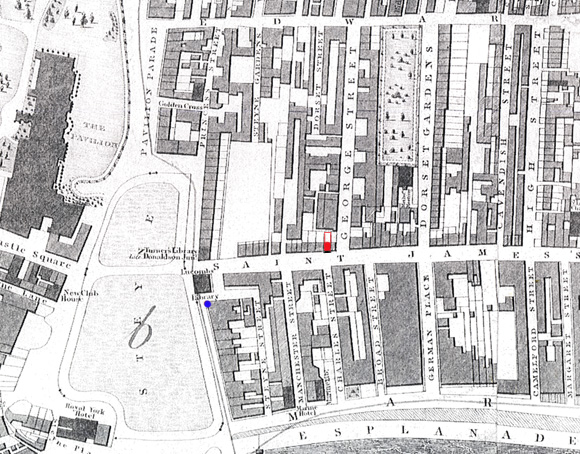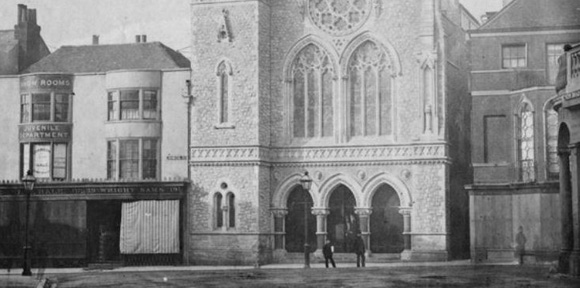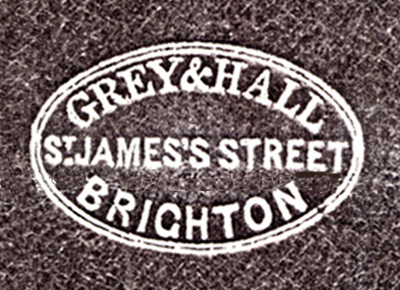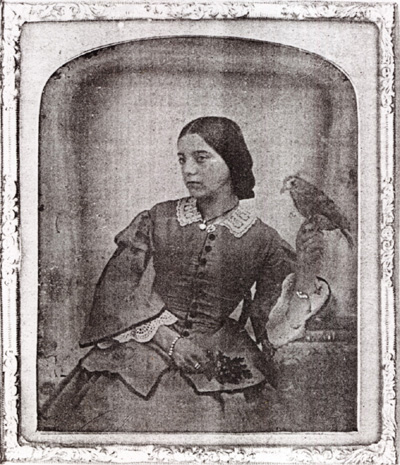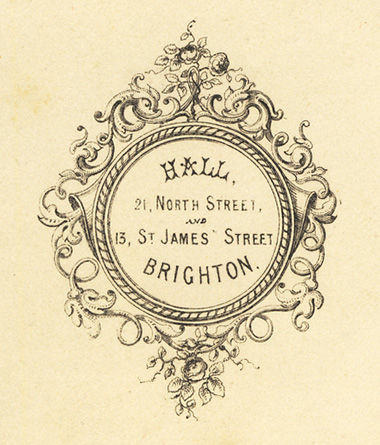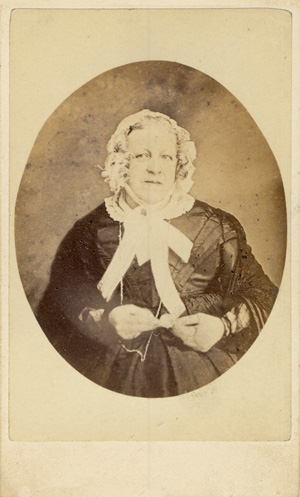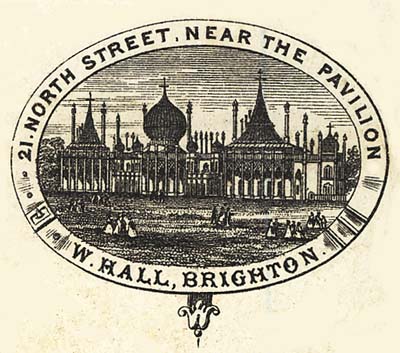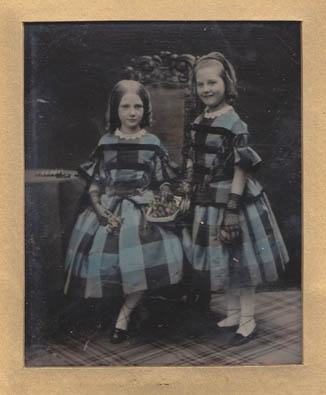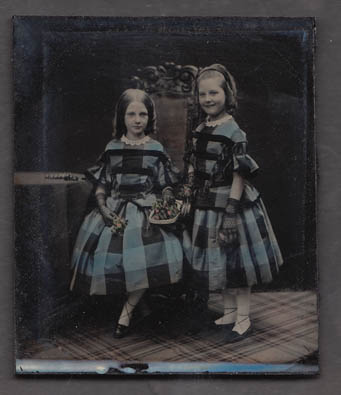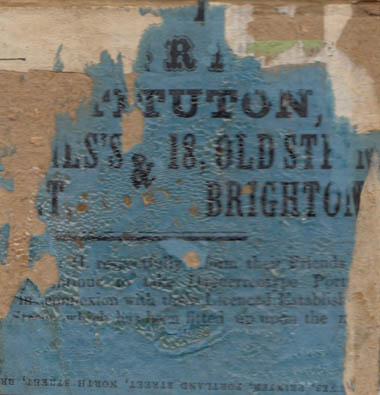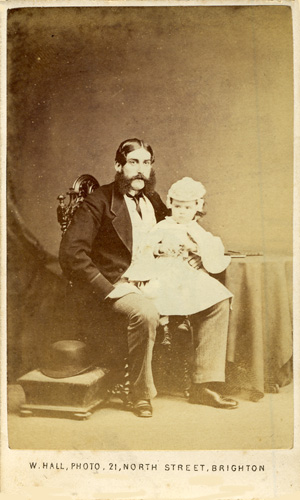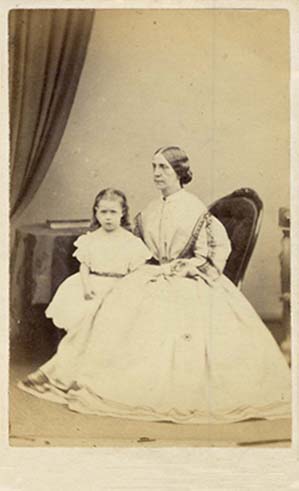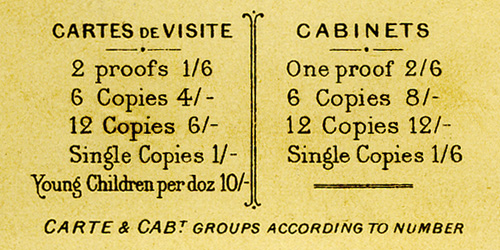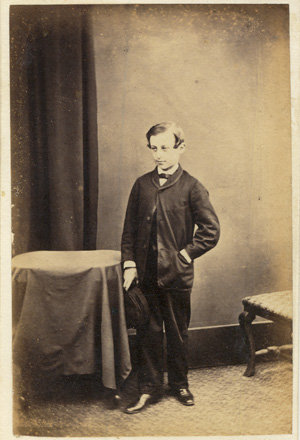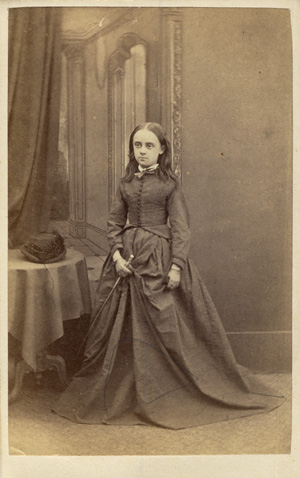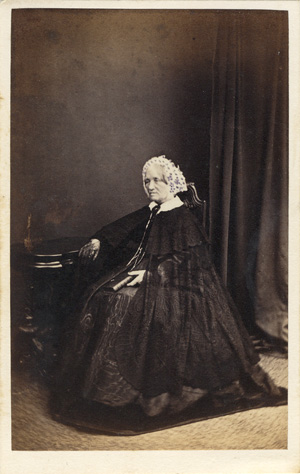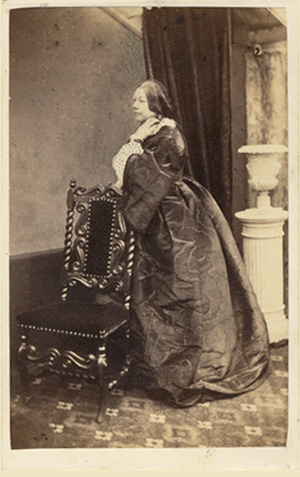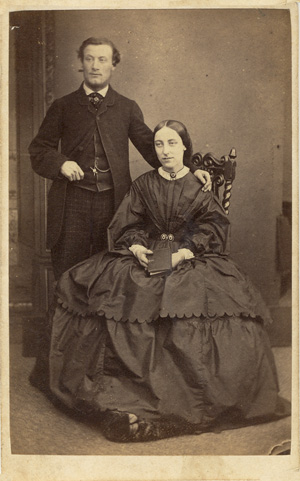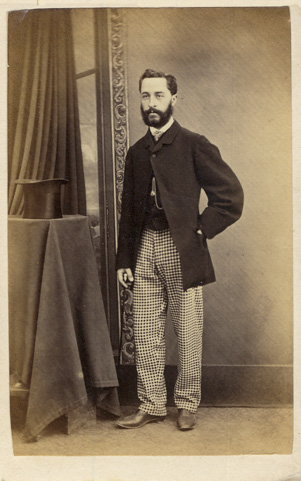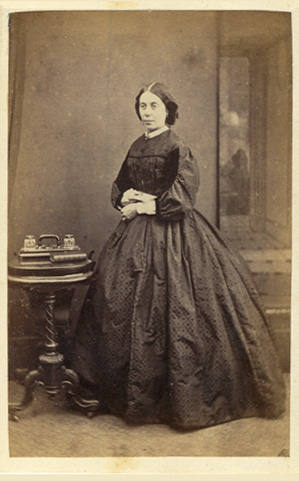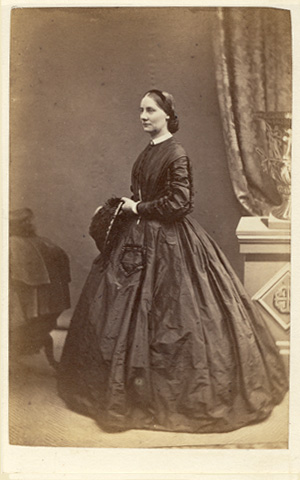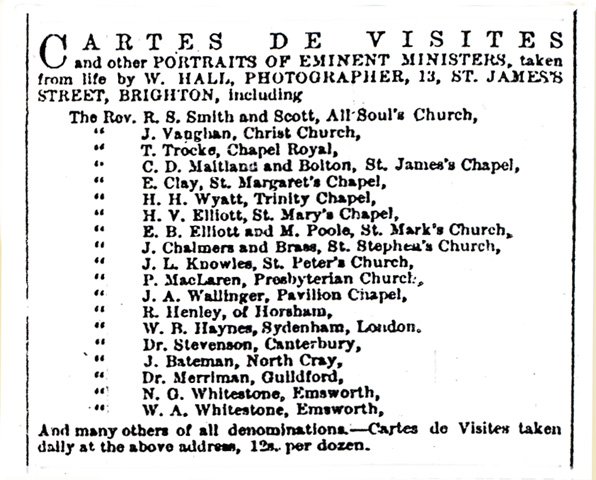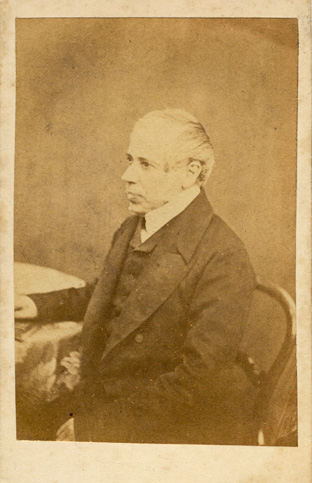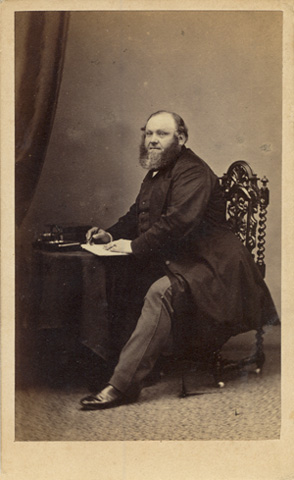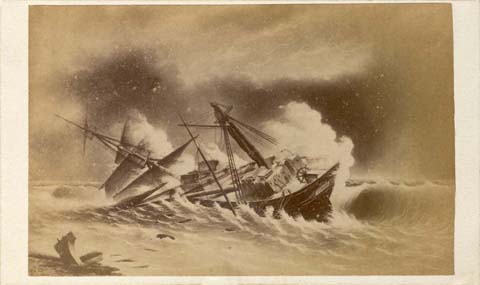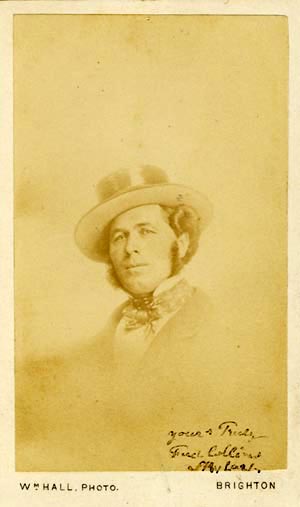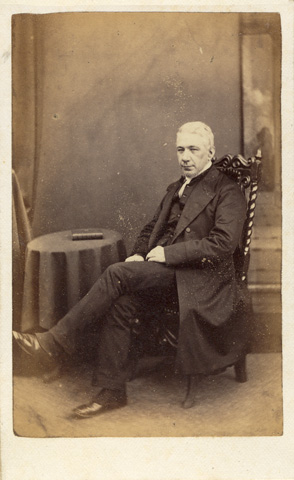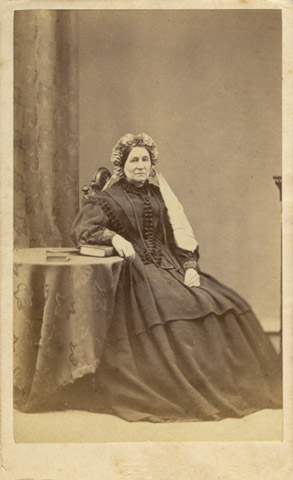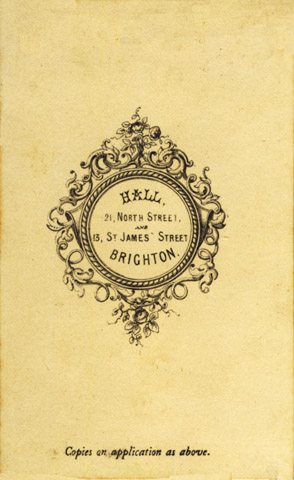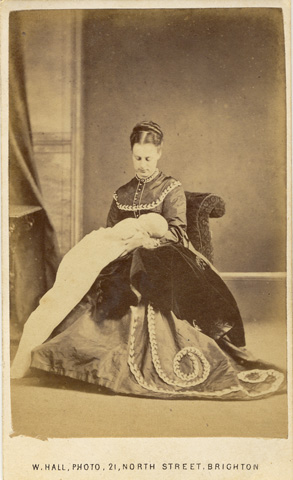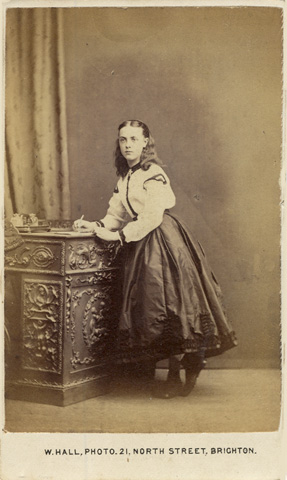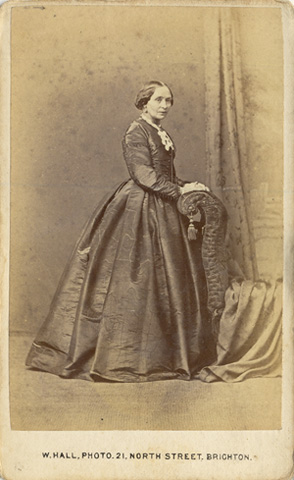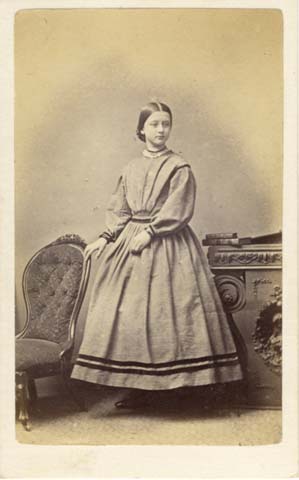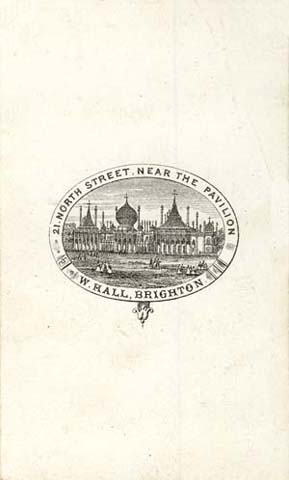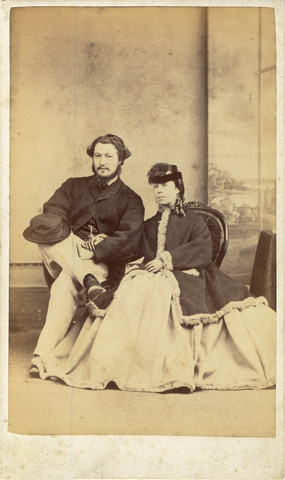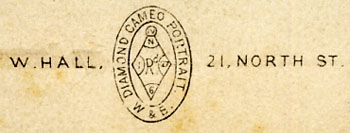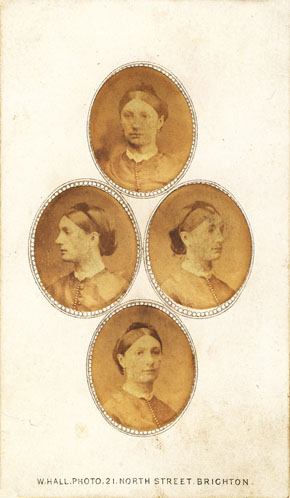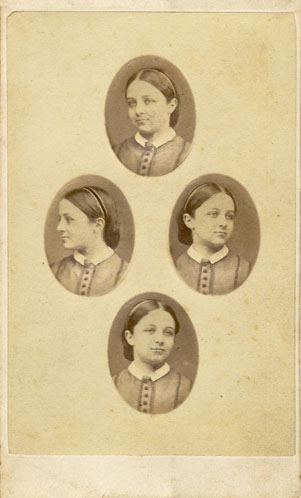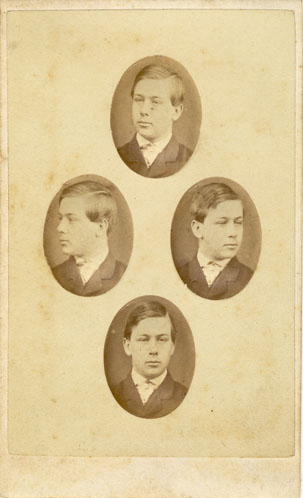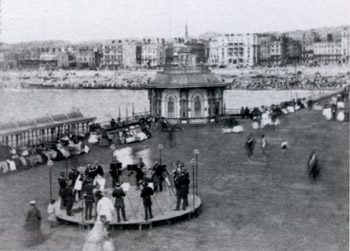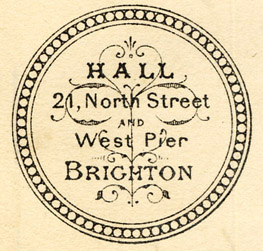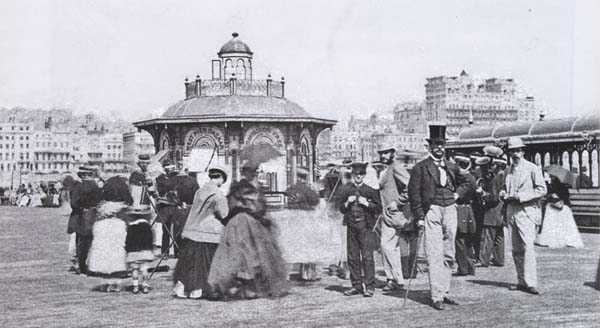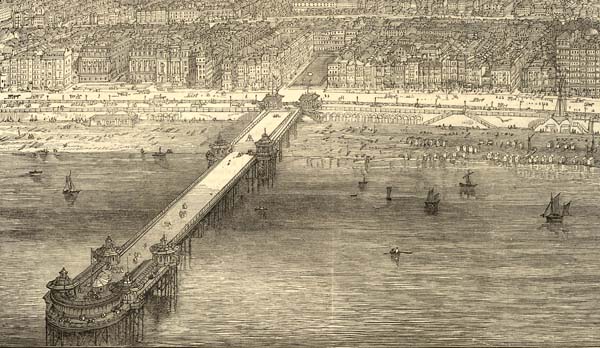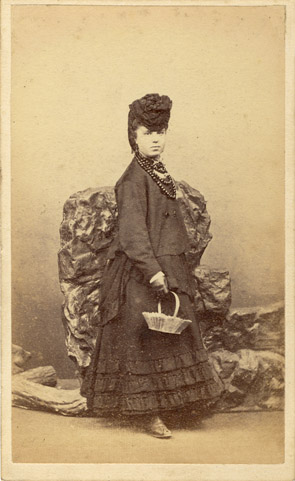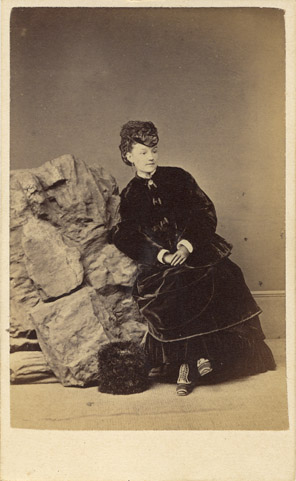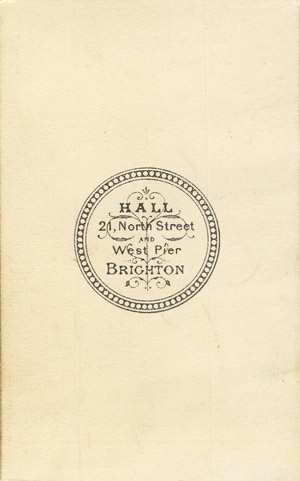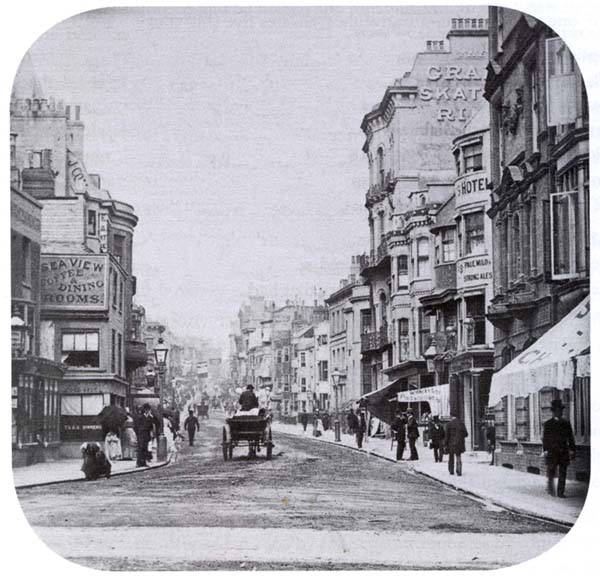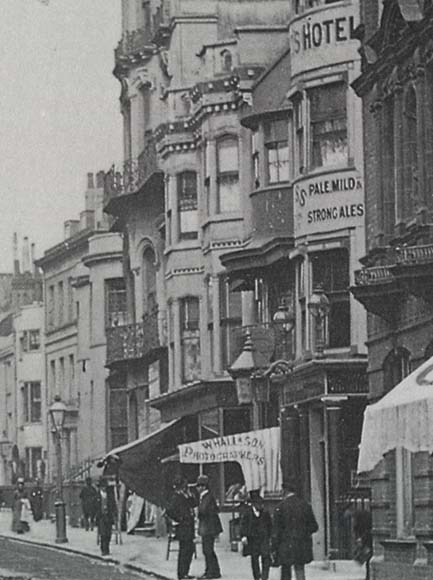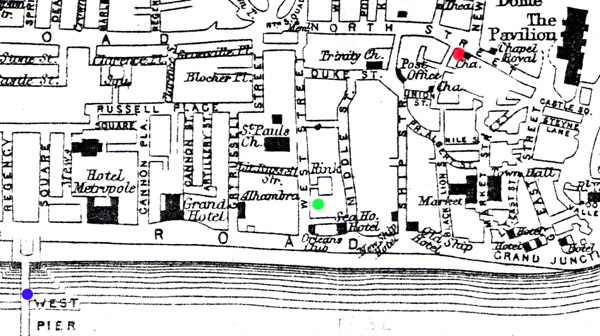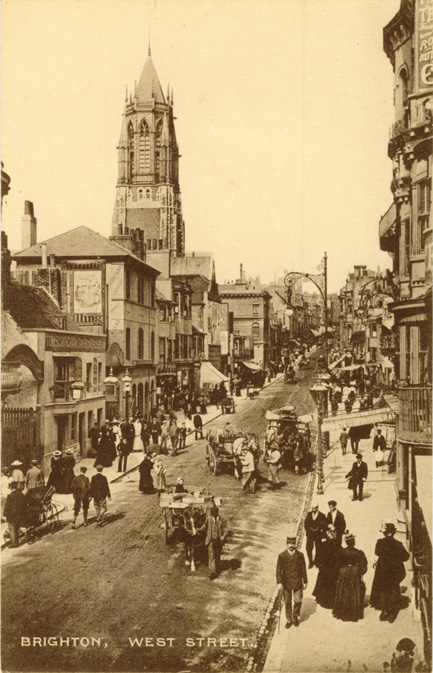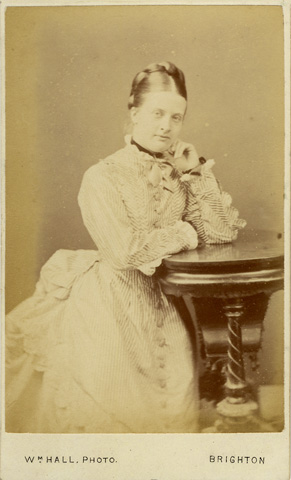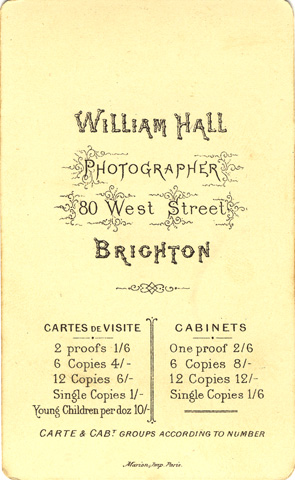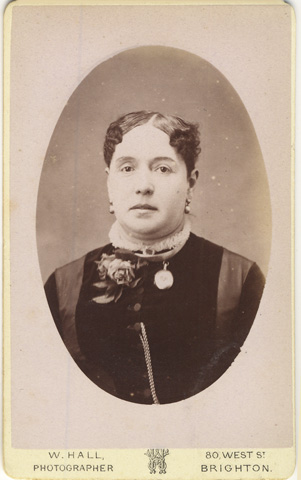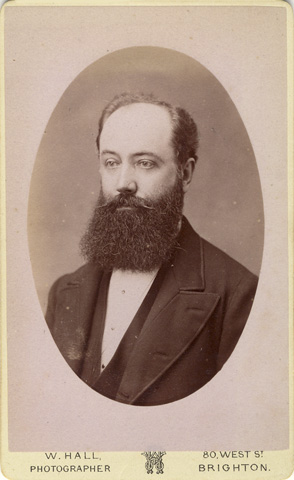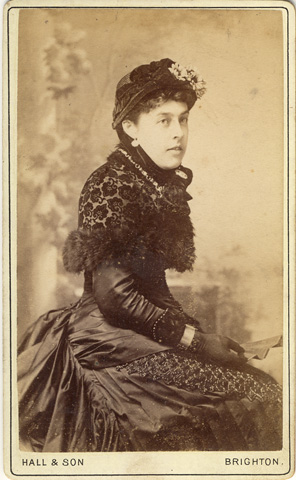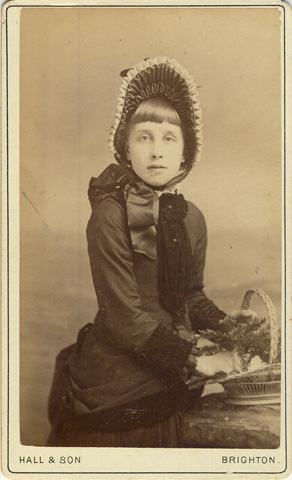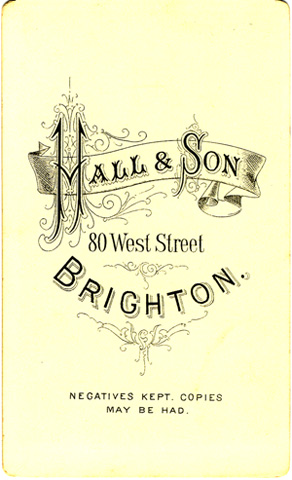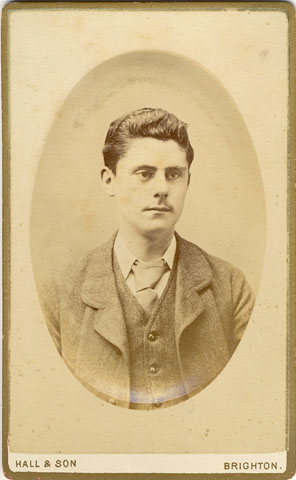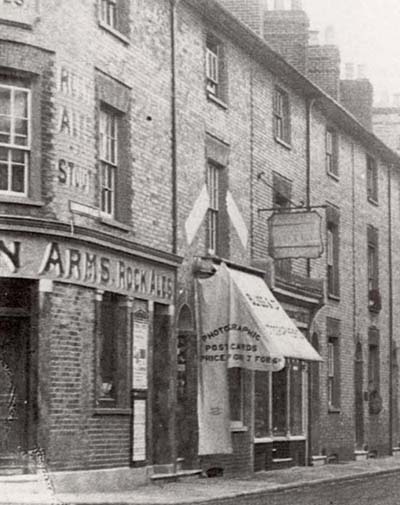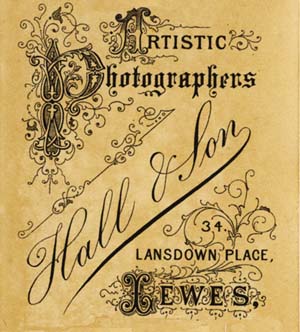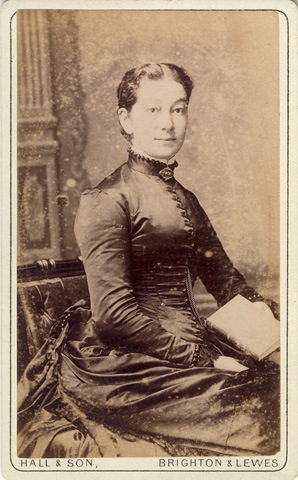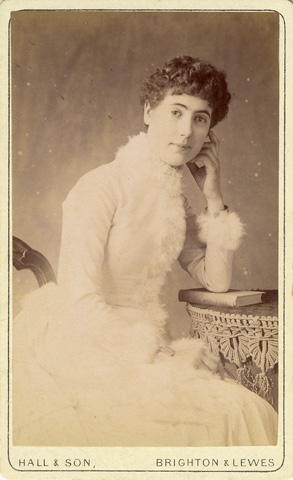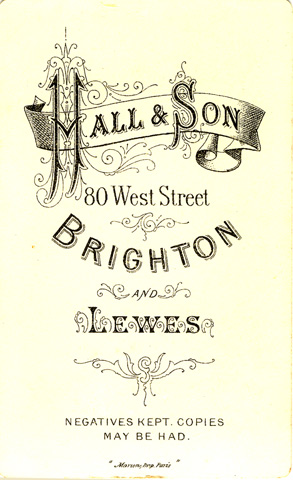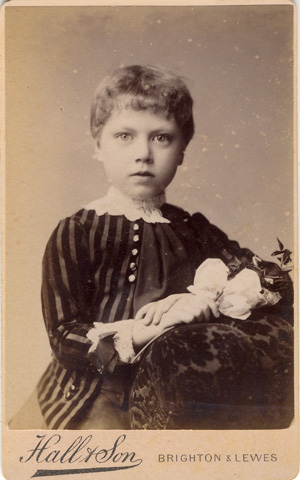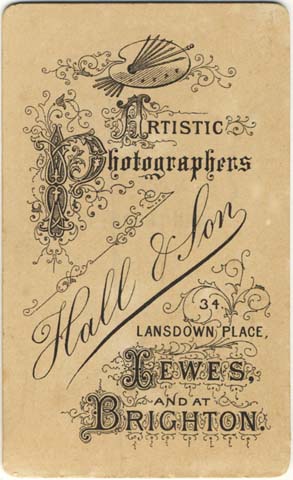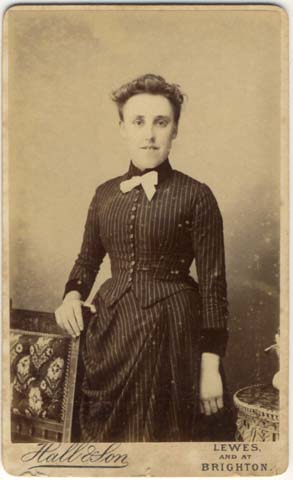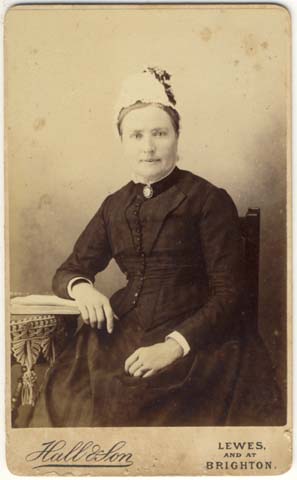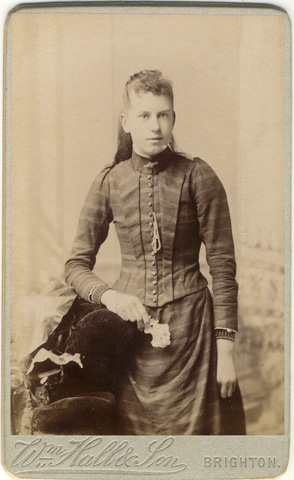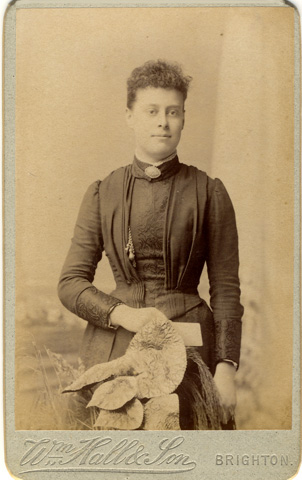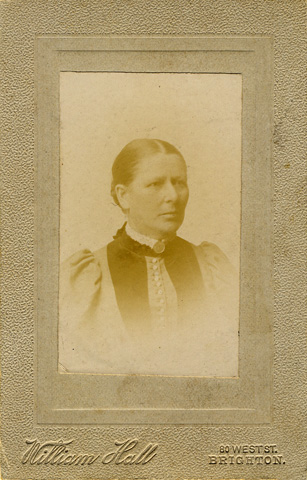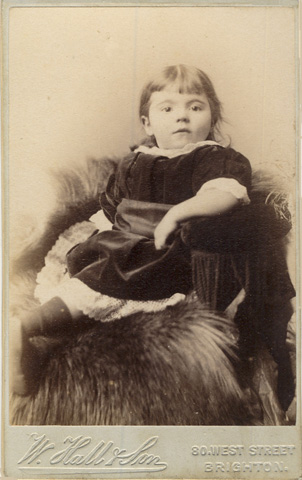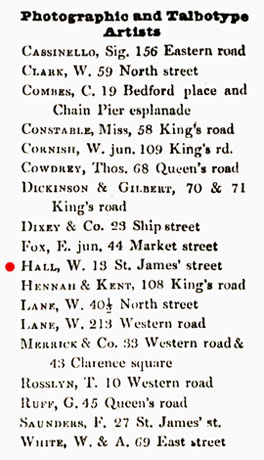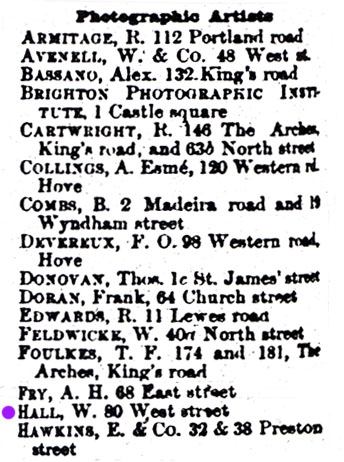William Hall originated from Scotland. William Hall was, according to his own account, born in the Scottish county of Roxburghshire around 1826. [ In the 1891 census, William Hall gives his place of birth as Selkirk, a Scottish town located in a neighbouring county ]. When he was in his twenties, William Hall moved to England, where, around 1853, he married his wife Eliza (born c1826, Portsmouth, Hampshire). The couple settled in the Sussex seaside resort of Brighton, where, during the 4th Quarter of 1854, their first child, Eliza, was born. William Hall had probably moved to Brighton to enter into a business partnership with Stephen Grey (1822-1891) a portrait painter and photographer. By July 1854, the firm of Grey & Hall had established a 'Photographic Institution' at 13 St James' Street, Brighton. In an advertisement dated 13th July 1854, Grey & Hall announced the opening of their "General Photographic Institution", where they made photographic portraits "by all the most recent and improved processes, by License of the Patentees". [Notice on page 4 of the Brighton Gazette, 3rd August 1854]. An advertisement for Grey & Hall's General Photographic Institution in the Brighton Gazette of 3rd August 1854 reads as follows :
Grey & Hall's General Photographic Institution was unusual in that the photographers offered to take portraits using all three of the available photographic processes. - Daguerreotype, Talbotype and Collodion Positive. The patent on the daguerreotype, a positive image on a silver-coated copper plate, had come to an end on 14th August, 1853, and so, strictly speaking, Grey & Hall did not need to hold a licence for this particular method of photography. The Talbotype was a positive print on paper made from a negative using William Henry Fox Talbot's calotype process, which the inventor had patented in 1841. Professional photographers who wished to produce Talbotype portraits were required to purchase a licence from William Henry Fox Talbot. In 1851, Frederick Scott Archer had invented a photographic process which involved coating a glass plate with a sticky substance called collodion. Archer had chosen not to patent his invention, but as the collodion process involved making photographs from a negative, Talbot claimed that the process was covered by his earlier patent. The Collodion Positive was a method by which an underexposed collodion glass negative was placed against a black background to give the appearance of a positive photograph. As William Henry Fox Talbot had recently started legal action against photographers who were using the collodion process, alleging they were infringing his patent rights, Grey and Hall decided to purchase a licence from Talbot so that they were free to produce both Talbotype portraits and 'collodion positives.' By 1854, there were only nine photographic studios in England holding licences from William Henry Fox Talbot and two of these were located in Brighton - Hennah & Kent's Talbotype Portrait Gallery at 108 King's Road and Grey & Hall's General Photographic Institution at 13 St James's Street. Grey & Hall's Photographic Institution was located at 13 St James Street, in the eastern part of Brighton called Kemp Town. St James Street led to the Old Steine and ran parallel to Marine Parade on the eastern seafront and so was reasonably well located for visitors to the seaside town. Folthorp's Directory for Brighton, which was compiled in September 1854, lists the business premises of Grey & Hall at 13 St James's Street, but within a month the two photographers had opened a second studio in the Old Steine.In October 1854, Grey & Hall publicized a second studio at 18 Old Steine, but this branch studio was only in business for a short time. The partnership of Grey & Hall was dissolved on 25th November 1858. William Hall retained the studio at 13 St. James's Street and his former partner Stephen Grey established a separate studio of his own.
During his business association with the photographer Stephen Grey, which lasted for over 4 years, William Hall had fathered two more children. William Hall junior was born in Brighton towards the end of 1856 and his brother James Hall was born in Brighton during the 2nd Quarter of 1858. William and Eliza Hall's fourth child, Christiana (or Christina) Hall was born in Brighton during the 4th Quarter of 1859.
When the census was taken on 7th April 1861, William Hall and his family were recorded in the living quarters attached to his photographic studio at 13 St James's Street, Brighton. [ According to early advertisements, William Hall's studio in St James's Street was a spacious "glass-room"]. On the 1861 census return, William Hall is described as a thirty-four year old "Photographic Artist". The following year, William Hall acquired business premises at 21 North Street, Brighton, a building situated next to Lady Huntingdon's Chapel. The building at 21 North Street had previously been used as a lace and linen warehouse, but Hall successfully converted it into a photographic portrait studio. For a short period, William Hall operated the studios at 13 St James's Street and 21 North Street in tandem, but around 1863, he sold his studio in Kemp Town to the artist and photographer Richard Jeffray. From 1863, William Hall worked solely from his studio at 21 North Street, Brighton. By the early 1860s, William Hall was mainly producing small carte-de-visite portraits at his photographic studio. [See examples from William Hall's St James Street studio below]. William Hall charged 12 shillings for a dozen carte-de-visite portraits.
PHOTO: Brighton Royal Pavilion and Museums |
[ABOVE] The trade plate of Grey & Hall of 13 St. James Street, Brighton, which was stamped on the leather case of the collodion positive photograph shown below. [PHOTO: Courtesy of Richard Meara]
[ABOVE] Portrait of a young woman holding a pet bird, a collodion positive (ambrotype) by Grey & Hall's Photographic Institution, 13 St. James Street, Brighton (c1858). [PHOTO: Courtesy of Richard Meara]
[ABOVE] The trade plate of William Hall, photographer of 21 North Street, Brighton (c1865). William Hall operated the studio at 21 North Street for over 10 years, between 1863 and 1874. |

